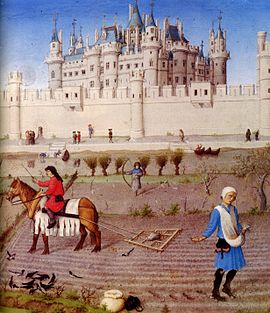
Back ديموغرافيا العصور الوسطى Arabic Средновековна демография Bulgarian Srednjovjekovna demografija BS Demografie středověké Evropy Czech Erdi Aroko demografia Basque Démographie de l'Europe médiévale French Demografi abad pertengahan ID Демографија на средниот век Macedonian Demografia średniowiecza Polish Демография Средних веков Russian
This article has multiple issues. Please help improve it or discuss these issues on the talk page. (Learn how and when to remove these template messages)
|

Medieval demography is the study of human demography in Europe and the Mediterranean during the Middle Ages. It estimates and seeks to explain the number of people who were alive during the Medieval period, population trends, life expectancy, family structure, and related issues. Demography is considered a crucial element of historical change throughout the Middle Ages.
The population of Europe remained at a low level in the Early Middle Ages, boomed during the High Middle Ages and reached a peak around 1300, then a number of calamities caused a steep decline, the nature of which historians have debated. Population levels began to recover around the late 15th century, gaining momentum in the early 16th century.
The science of medieval demography relies on various lines of evidence, such as administrative records, wills and other types of records, archaeological field data, economic data, and written histories. Because the data are often incomplete and/or ambiguous, there can be significant disagreement among medieval demographers.
© MMXXIII Rich X Search. We shall prevail. All rights reserved. Rich X Search